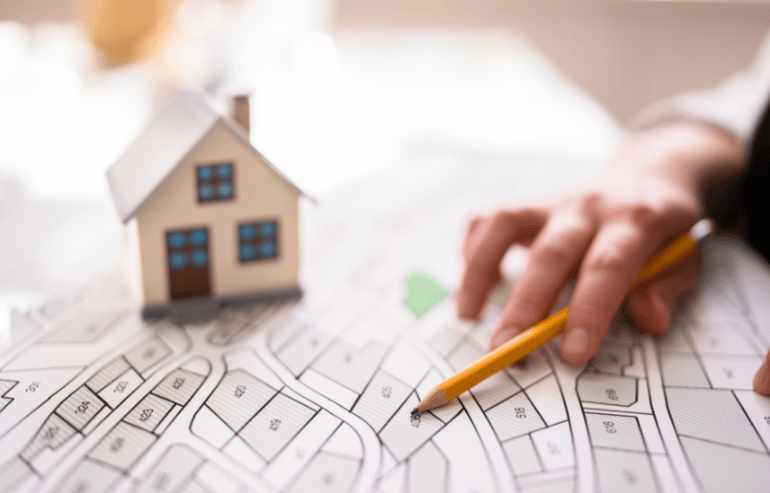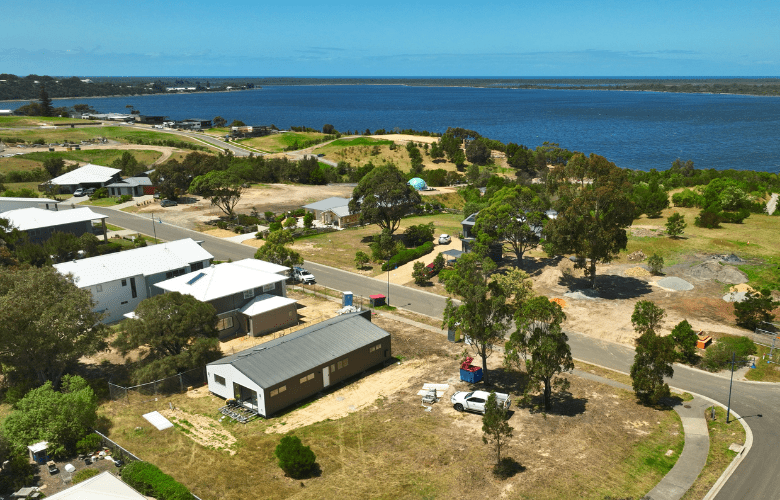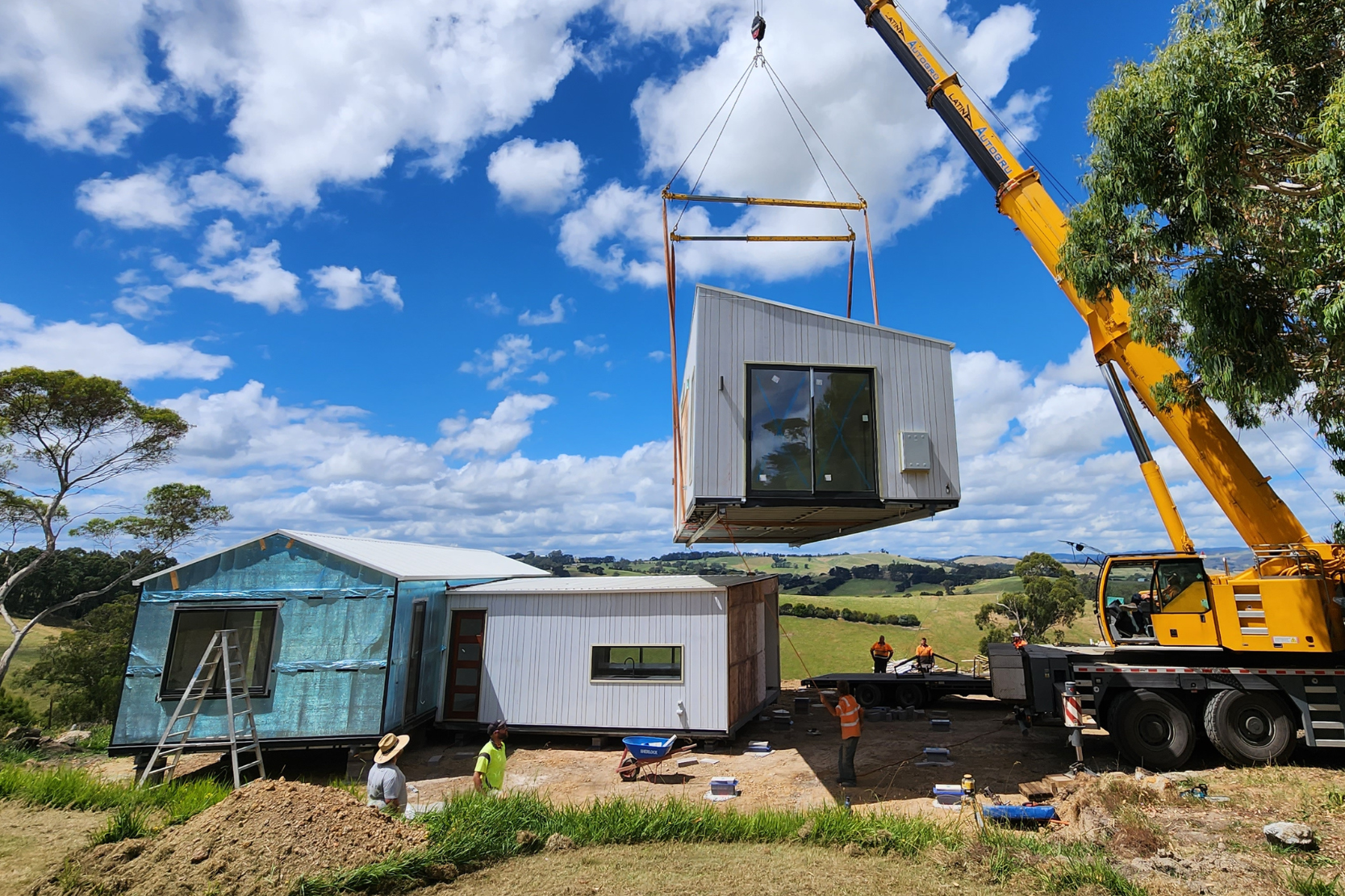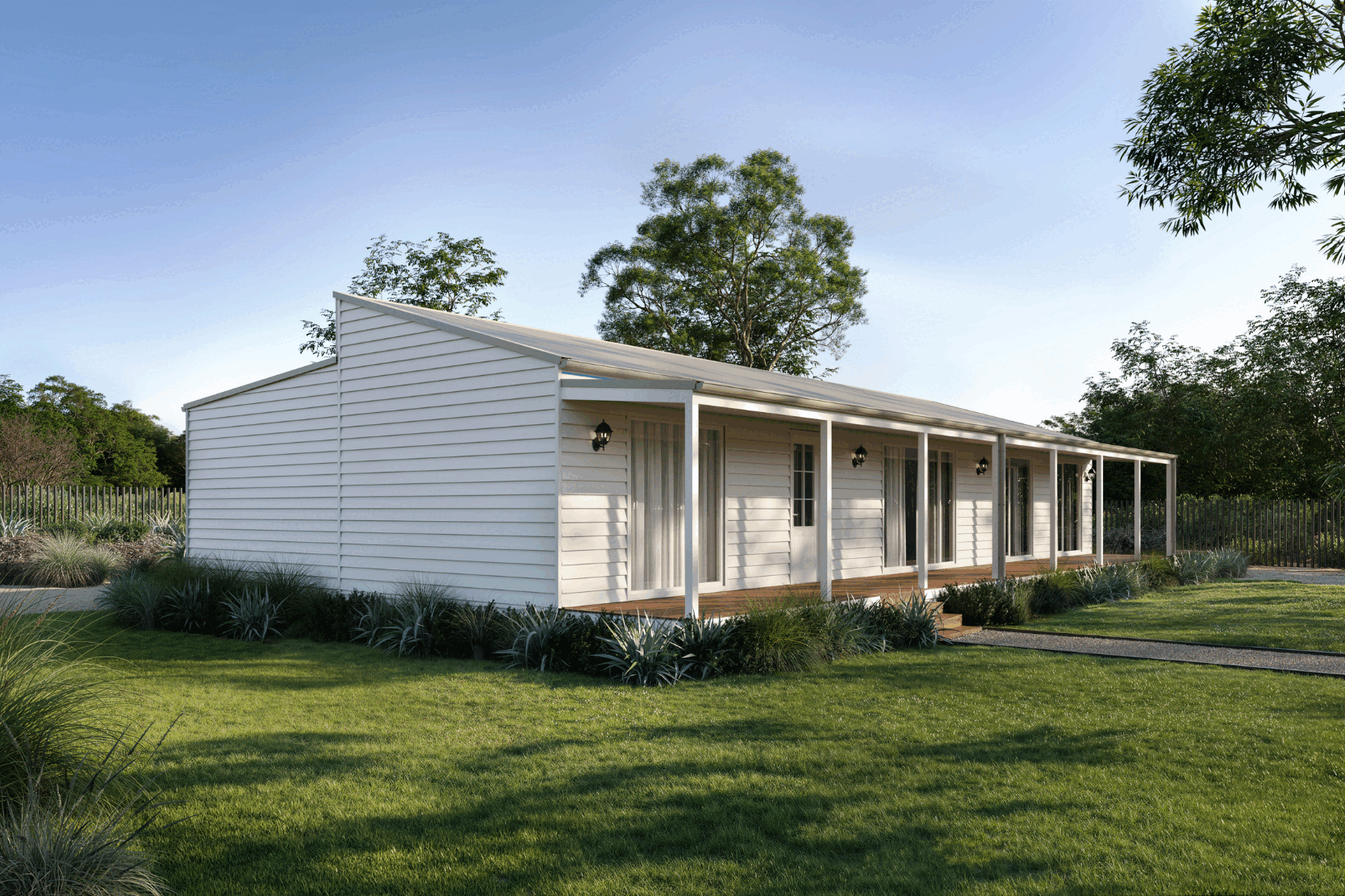Article
Maximise your property investment - How to subdivide your property
Design inspiration
Modular construction
February 16, 2024
Written by
Alana McNab

Do you want to make the most of your property? Subdividing land is a popular option for many Australians because it takes advantage of the land you already own.
In this article, we explain how to subdivide your land, the key financial costs involved, and the pros and cons to consider.
What is a land subdivision?

Subdividing a block of land is the process of dividing one block into two or more smaller blocks. When a subdivision is complete, each lot has its own land title and can be sold or rented accordingly.
The benefits of land subdivision
- Higher ROI
- Increase equity
- Provides multiple options to sell, rent, or build the new block
- Smaller blocks can be easier to maintain
The potential challenges with land subdivision
- Smaller blocks may be worth less
- Unexpected subdivision costs
- Time delays and slow approval times
- Subject to market changes.
How much does it cost to subdivide land?

Subdividing land in Australia can cost anywhere from $30,000 to $90,000. These costs are usually made up of council application costs, surveyors’ fees, and civil works. Depending on the size and scale of your subdivision, you could use a home loan to finance it.
As with the process of subdividing land, the total cost is likely to vary depending on several factors. According to Accumulate Australia, you might expect subdivisions in Australia to cost anywhere between $30,000 to $90,000, depending on several factors, such as application fees, surveying fees, planning fees, development contribution fees, and infrastructure fees.
Subdivision cost per state
The cost of subdividing land varies depending on your location and the complexity required to subdivide your block. However, as a general guide, the following figures provide an estimate for each Australian state:
- New South Wales — $50,000+
- Northern Territory — $25,000+
- Queensland — $60,000 to $90,000+
- South Australia — $30,000 to $35,000+
- Tasmania — $25,000+
- Victoria — $30,000 to $50,000+
- Western Australia — $50,000 to $90,000+
* These prices are taken from the Canstar data in 2023.
You can also find a list of regulatory fees associated with building, buying, and renovating through the Australian Capital Territory (ACT) Government. If you are considering subdividing a block, always seek professional advice from a lawyer, conveyancer, or town planner to get a cost estimate based on your specific proposed subdivision.
How to subdivide land NSW and VIC

Firstly, you need to recognise that the subdivision of land is at times complex, and is also location-specific. It's a high-stakes process that requires careful consideration and expertise. At Anchor Homes, we service in New South Wales and Victoria, therefore our advice is applicable to these areas only.
1. Seek professional assistance
While you can go it alone, consulting with experts can help ensure a smoother and more successful outcome. They will assess your property’s potential, determine the prospective value of a subdivision, and create a review of the property and your options. This will also include a summary of the relevant regulations and constraints.
If you have a subdivision project in mind, consider booking a consultation with a professional team to receive personalised guidance and assistance. During this consultation, they will look at things like zoning, site constraints, environment mapping constraints, and accommodations for stormwater.
This is also a good time to consider alternative options. Instead of subdividing, you might like to add a granny flat to the property and use it as a short-term rental, guest house, or home office. This can add significant value to your property and increase your profit when you decide to sell.
2. Submitting a subdivision application
The subdivision application will be submitted to your local council or town planning authority, along with any required paperwork. The relevant authority will depend on your block’s location and is different from state to state.
To improve your chances of approval, you may like to hire a professional to design a house that would suit the proposed block. This will ensure you aren’t left with an empty block that cannot be developed.
3. Permit issued
Once the council or government body has assessed your application, they will either approve or deny it. If your application is approved, you will receive a development permit. This will contain a deadline to complete the development and a list of conditions the development must comply with.
4. Work starts
Now that the subdivision has been approved, you can arrange for the construction and civil work to commence. Any work must be done in line with the conditions of the permit. The new block needs to be fully serviced, meaning it must be able to connect to energy, water, sewage, and any other required utilities.
5. New survey plan
When all the work on the property is complete, you need to organise for a licensed surveyor to prepare and review the new survey plan. This will appear on the title search as a way of identifying the new block. The surveyor can also apply to the relevant council/governing body for plan sealing, which is the final approval of the division.
6. Statement of compliance
If the relevant authority is satisfied that all the relevant requirements have been met, they will approve and seal the new survey plan. They will issue a new land title which will include the new survey plan and title reference number. You will also receive a statement of compliance to show that you completed the subdivision according to the permit.
7. Next steps
You are now the owner of two separate blocks of land and it’s up to you what to do with them. Popular options include the following:
- Sell the vacant block
- Build a home and then sell it
- Build a home as an investment property
- Build a new home, move in, and sell the original home
- Build a new home, move in, and rent out your original home
If you decide to build on the empty land, we recommend considering a modular home as a convenient, efficient approach. Compared to building on-site, modular home construction is quick, predictable, and less disruptive. Additionally, building right next to your current home will save you a lot of stress, noise, and money.
Modular homes are built in sections in a factory environment and then delivered to your block. Then, the sections are assembled, fixed to the foundation, and connected to town services. This means you’ll have a brand new home that is fully completed and customised to suit your needs.
Over to you

Before you start the subdivision process, our team can provide a desktop site assessment of your land to determine its suitability for a modular build. If we determine that your land is suitable for one of our modular homes, you can get started with the exciting building process!
To help you make an informed decision, simply request a desktop site assessment today.






.png)